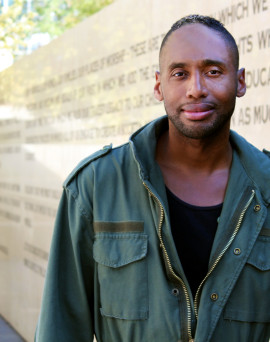Survivor Stories
Troy
CaliforniaTestimony before the Senate Judiciary Subcommittee hearing on solitary confinement (February, 2014)

Thank you for holding this important hearing. Solitary confinement is a tool used to abuse inmates for an astounding number of reasons. Inmates who assert their rights, report abuse, or are generally thought to be “a threat to good order” because of their sexual orientation or gender identity are often locked away for weeks on end with no services, no explanations, and no indication of when they will be released. I know this for a fact because it happened to me.
I spent 24 years in juvenile detention, adult jails, and prisons. Throughout my time in custody, I experienced near constant verbal abuse and regular sexual and other physical abuse. As an openly gay man, I was targeted by staff and other inmates for harassment and discrimination.
I was released from my most recent period of incarceration in 2008 and have been working as a community activist in Los Angeles, CA ever since. As a survivor of sexual abuse in detention, I speak out about the epidemic of violence facing hundreds of thousands of men, women, and children every year. I am proud to be a member of Just Detention International’s Survivor Council and spend time every week trying to end the national shame that is prisoner rape.
One of the most effective means of ending sexual abuse in detention is providing survivors with effective means of reporting potential or actual abuse. In my experience, too many corrections facilities deter inmates from reporting by the way they use solitary confinement. Though different systems use different terms (special housing unit, administrative segregation, etc), inmates all understand solitary to be “the hole.”
We learn early on that if you make any allegation of inappropriate conduct, you are going to the hole. Sometimes you go down for a short period of time, but most often for 30 or more days. In 1996, I was being held in Folsom State Prison in California. Because of ongoing sexual abuse by my cellmate, I requested to be moved. Somehow, my cellmate found out. He did not take the news well.
Late at night, he scalded me with hot water while I slept. Corrections officers responded to my cries for help. Once out of the cell, I reported both the physical attack and the ongoing sexual assaults. I was transferred to the medical unit for a period of time so my first- and second-degree burns could be treated. Before I was healed, though, I was moved to Folsom’s special housing unit.
While there, I was in pain, alone, and had no one to talk to. I was provided only minimal follow-up health care and no treatment or counseling for the sexual abuse I reported. I was kept in the hole for more than 30 days. I was never told if an investigation was being conducted into my report or when I could expect to return to general population. It was horrible and made worse by my assailant also being transferred to a different cell in the hole with me.
While my experience with solitary confinement was almost 20 years ago, it will stay with me for the rest of my life – and such horrific treatment is not a thing of the past. I understand that men, women, and children being held across the country are subjected to the exact same abuses. The United States must reform the use of solitary confinement. The hole causes great anguish to many people, damages our psyche, and exacerbates pre-existing trauma. I thank you for continuing the dialogue on this issue and urge you to move beyond talk into action.
Back